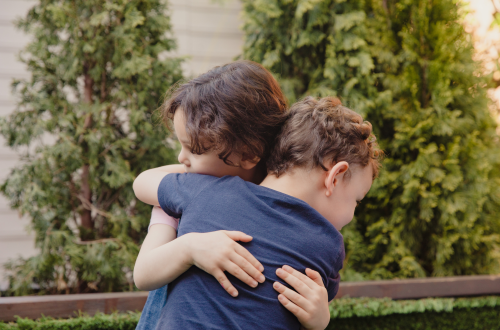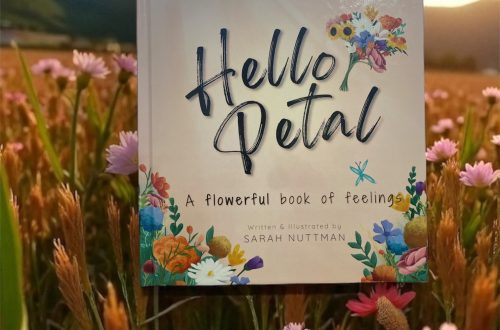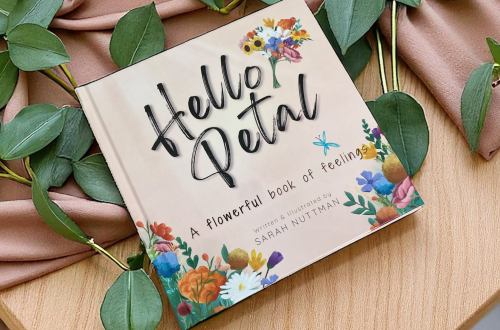
What Is a Feelings Book?
🌼 What Is a Feelings Book?
And why are they such a beautiful tool for little hearts?
In the early years of childhood, emotions can feel enormous — but the words to describe them are still blooming. That’s where feelings books come in.
These gentle stories support young children as they begin to:
🌿 Recognise what they’re feeling
🌿 Learn names for those feelings
🌿 Understand that all emotions — even the big, messy ones — are okay
Rather than “fixing” emotions, feelings books offer a safe space to explore them — with warmth, permission, and language that feels just right for little ones.
✨ Why Feelings Books Matter
Children are deeply emotional beings. Even in infancy, they begin experiencing a wide range of feelings — joy, frustration, fear, curiosity, excitement. But they don’t yet have the vocabulary or self-awareness to make sense of what’s happening inside.
That’s where stories can help.
According to Harvard’s Center on the Developing Child, early experiences with language and relationships shape how children regulate emotions and respond to stress. Books that explore feelings support these crucial building blocks of social-emotional development — especially when shared with an engaged adult caregiver [1].
Research also shows that naming emotions (a process known as affect labeling) can actually reduce their intensity in the brain [2]. When children learn words for their emotions, they’re better able to process them and ask for help when they need it.
Over time, these small moments of connection build:
- 🗣️ Emotional vocabulary — the foundation for self-expression
- 🔍 Self-awareness — noticing and naming internal experiences
- 💛 Empathy — recognising that others have feelings, too
As Dr. Dan Siegel (author of The Whole-Brain Child) puts it, “Name it to tame it” — giving children the language for their inner world helps them feel safer and more in control [3].
📖 What Makes a Good Feelings Book?
A high-quality feelings book is age-appropriate, emotionally honest, and gentle in its tone and visuals. It doesn’t offer judgment or shame for “big” emotions. Instead, it:
- Normalises a wide range of feelings
- Uses simple, clear language and repetition
- Includes warm, expressive illustrations
- Reflects experiences that children recognise
- Encourages conversation with caregivers
Books that explore emotions through metaphor — such as colours, weather, or nature — are particularly helpful for very young children, as they often experience emotions more through the body than through words.
🌸 Why I Wrote Hello Petal
Hello Petal was born from a blend of motherhood, creativity, and deep care for emotional literacy in early childhood.
As a parent, I saw how often emotions showed up as behaviour: meltdowns, wild joy, clinginess, frustration. Underneath it all were big feelings that needed to be seen, named, and gently held.
I wanted to create a book that felt like a soft landing — a gentle hug in story form. A way for children (and the grown-ups reading to them) to remember that every emotion has a place.
In Hello Petal, each flower represents a different feeling.
Some are bright and bold. Others are quiet and reflective.
Some shout with excitement. Some ache with sadness.
But they all belong — because that’s true for us, too.
By giving children a visual and poetic way to explore their feelings, the book helps create connection, build understanding, and open up warm conversations that grow with your child.
📘 Explore Hello Petal
If you’d love to explore emotions with your little one, Hello Petal is available now for preorder.
🌼 Ships this September
🌼 Includes a free digital thank-you bonus for early birds
🌼 Free local pickup available for Adelaide Hills families — use code LOCALPICKUP at checkout
💛 Stay Connected
Want more gentle resources, printables, and book news?
Join my email list here.
🌐 Sources:
- Harvard University Center on the Developing Child. Building Core Capabilities for Life. https://developingchild.harvard.edu/resources/building-core-capabilities-for-life
- Lieberman, M. D. et al. (2007). Putting feelings into words: affect labeling disrupts amygdala activity in response to affective stimuli. Psychological Science, 18(5), 421–428.
- Siegel, D. J. & Bryson, T. P. (2011). The Whole-Brain Child: 12 Revolutionary Strategies to Nurture Your Child’s Developing Mind. Delacorte Press.
- National Scientific Council on the Developing Child. Young Children Develop in an Environment of Relationships. https://developingchild.harvard.edu/resources/wp1/





